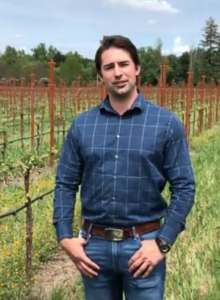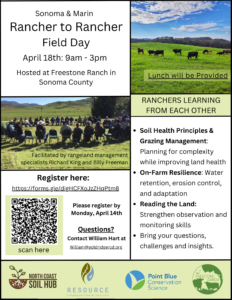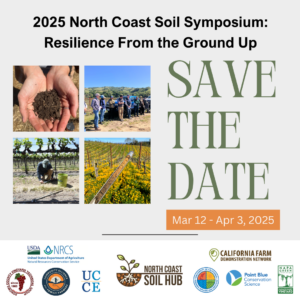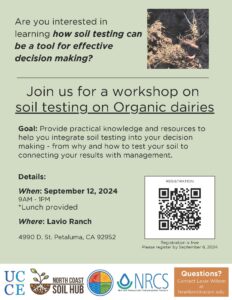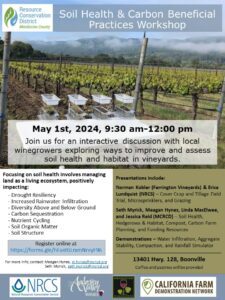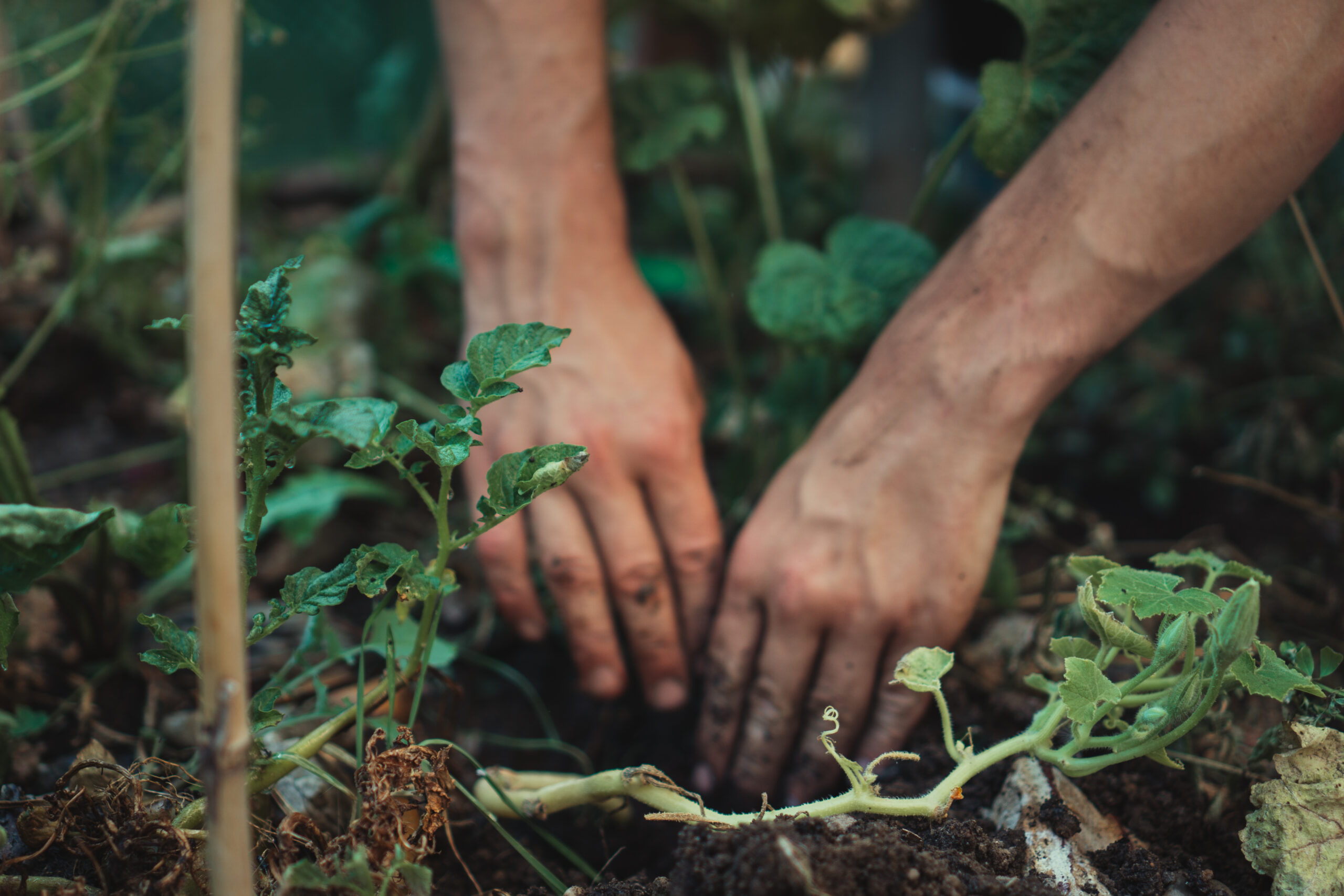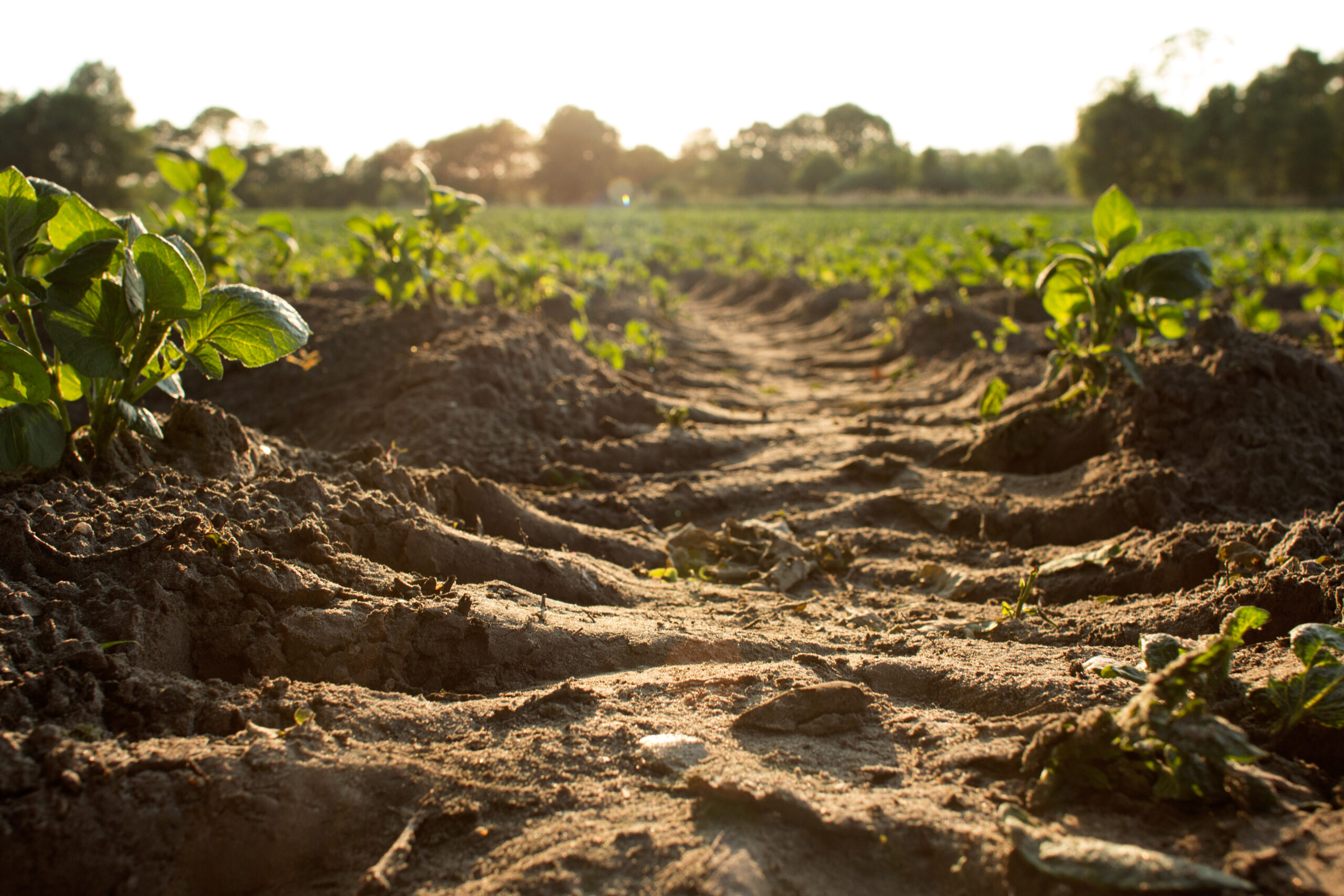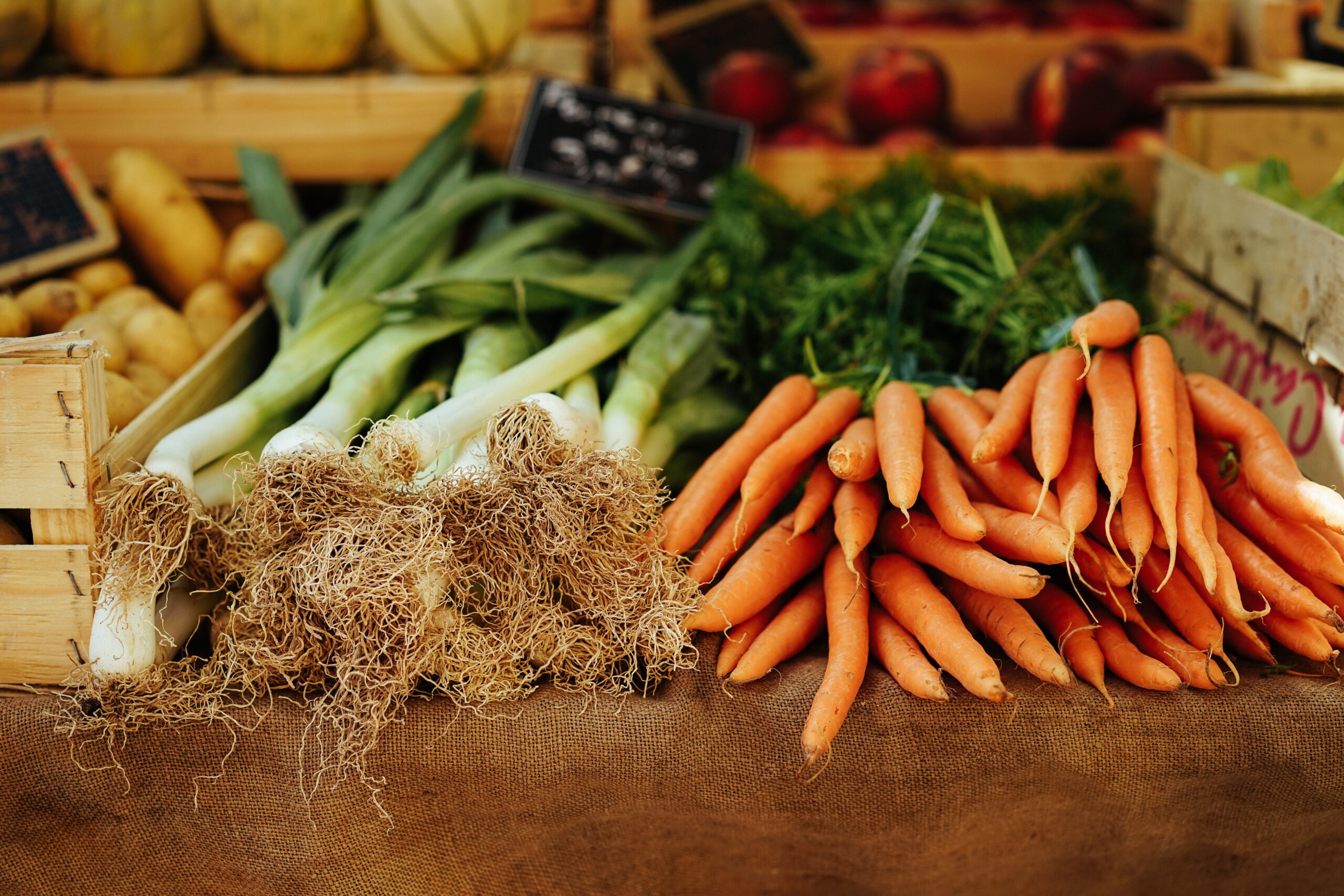Q: What motivated you to create a Carbon Farm Plan?
A: Sustainability and stewardship have always been core values of the Cakebread family. Determining our carbon footprint baseline of current practices on our ranches helps us understand the next steps we need to take towards overall C reduction.
Q: How did Napa RCD help you create your Carbon Farm Plan?
A: After providing site specific information and completing a vineyard tour, Miguel Garcia and his team at the RCD drove the carbon farm planning process. Through our discussions the Napa RCD was able to create individual farm plans for our properties that focused on understanding our current carbon impact and provided a tailored recommendation on how we could continue to strengthen our practices.
Q: Why is Cakebread interested in Carbon Farm Planning? Why invest in the process?
A: An investment in sustainability is an investment in the future. Carbon farm planning allows you to see your vineyard through a different lens and then make educated decisions to improve your farming practices. For our vineyards and winery to be successful in the future we need to have good data and sound research. This will aid our long-term decisions that will have a direct impact on carbon emissions and sequestration.
Q: What does the future of sustainability look like to you?
A: The future of sustainability requires a collaborative effort, sharing ideas and technology. Evolving traditional farming practices further sustains the health of farmland and the balanced interaction with surrounding wildlife or humans. Farming sustainably starts with healthy soils which promote diverse and balanced ecosystems. Using tools such as cover crop, compost tea, and compost additions will lead to long lived vineyards, which in turn leads to improved carbon sequestration and reduced soil erosion.
Q: How can Napa RCD continue to help you reach a higher level of sustainability in the future?
A: Grower outreach programs and public education will further understanding and community involvement. As growers we find it essential to work with the local population as our decisions affect family, friends, and neighbors.
Q: What are the greatest challenges you see in implementing a Carbon Farm Plan?
A: The greatest challenge will be reducing tillage on sites that have been historically farmed under full-till practices. While the move to a no-till system may not be possible for all vineyards, we must do our best to reduce the release of greenhouse gasses from our soil into the atmosphere.
Q: As a grower, what do you see as the greatest challenge in reducing your impacts on our climate?
A: The greatest challenge we face is being limited by technological advance. Agriculture is reliant on fossil fuel-based inputs. While there are currently no viable options to replace fossil fuels, innovation within the next decade should lead to reduced reliance.
Q: How do we see the expression of sustainable farming practices in your wine making?
A: Healthy soils create more balanced vines, which will produce wine that needs little work in the winery and allows for the expression of the vineyard and site.
Q: As you move toward sustainability, how do you see this impacting your wines in taste and marketing?
A: We know that consumers and trade have many choices when choosing a bottle of wine. While we strive to differentiate ourselves with consistent, high-quality, food-friendly wines, we also hope that our dedication to the environment will give wine fans one more reason to trust Cakebread. As one of the first Napa wineries to earn the Napa Green certification, we proudly showcase that Napa Green logo on our wines to further reiterate our commitment to sustainability.
Q: How has your relationship with soil changed since beginning this process?
A: The carbon farm planning process has challenged me to rethink what I believe to be a healthy soil. I scrutinize each tillage pass, whether in row or under vine, and evaluate the necessity of the operation by weighing the benefit against the potential impact. All inputs are evaluated on their ability to improve soil health and biodiversity in the vineyard and surrounding areas.
Q: What does the future of sustainable wine grape growing look like in Napa County?
A: While Napa County, the surrounding North Coast counties, and California are ahead of the curve with sustainable farming there is always room for improvement. In the coming years we will strive to better manage our resources, improve soil health, and understand the role we play in local ecosystems.

